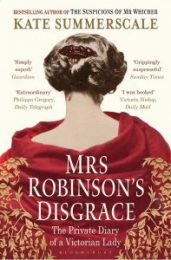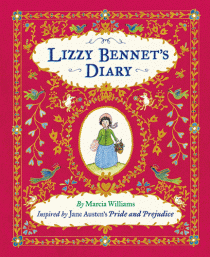Are you a plan-ahead-with-military-precision type of person? Or more of a go-with-the-flow-embrace-your-inner-spontaneity sort? Just asking, as we have our 2019 diaries and calendars in stock now.

Imperial Calendar. Catalogue reference: COPY 1/168 (1)
There is a great selection this year: classical, practical or ever-so pretty, depending on your taste. If you are already planning first quarter events you should buy one now. It could help you avoid the embarrassment of missed appointments or not sending Auntie a birthday card. And they make great presents, especially for those who have everything, so stock up for Christmas.
Even if you let Alexa run your life (‘Alexa, remind me to breathe’) and your phone is your personal diary, then a wall calendar can be a great way to share your schedule with the rest of the family and ensure that your own preferences remain paramount. (‘But the immersive protest poetry evening has been on the calendar for months; of course we can’t go to your mother’s on Thursday…’)
A calendar will be on the wall all year, so choose one with pictures you like and which reflects the interests of the recorder. A suffragette diary for someone interested in women’s history? Or one featuring striking 60s fashion photography? Spitfires? Gorgeous art deco illustrations from fairy tales of yesteryear? A little bit of Heath Robinson? Your notes may be pedestrian (flea treatment for cat, haircut, dentist) but that is no reason not to indulge yourself in the recording vehicle.
 We have diaries, too. Perhaps you would choose one of the perennially-popular national railway museum diaries (pocket and desk), where your memoranda can be accompanied by a soothing choo-choo of vintage railway posters – or perhaps you would prefer a simple, classic plain diary with a touch of gold scrolling? Or the sophisticated elegance of Victoria and Albert’s stylish art deco version with George Barbier’s gorgeously-attired flappers?
We have diaries, too. Perhaps you would choose one of the perennially-popular national railway museum diaries (pocket and desk), where your memoranda can be accompanied by a soothing choo-choo of vintage railway posters – or perhaps you would prefer a simple, classic plain diary with a touch of gold scrolling? Or the sophisticated elegance of Victoria and Albert’s stylish art deco version with George Barbier’s gorgeously-attired flappers?
Or maybe ruled squares are too constraining for you, and a virgin notebook is more your style. Your entries can be freer and more creative: one day worth two lines another spreading over three pages, depending on your mood. If that is the case, why not get one of our lovely leather-bound journals, full of creamy blank paper just waiting for your thoughts? In fact, why not go the whole hog and treat yourself to a beautiful pen set with which to write in your brand-new diary? We have a calligraphy workshop coming up, too, if you are worried that your handwriting might not to be up to the materials.
Remember, those diary entries could be scanned by future generations eager to understand your life and letters. Diaries are a rich source of information on our past. Exploring them is explained in ‘Tracing Your Ancestors Through Letters and Personal Writings’. Sarah Gristwood – in her book on Vita Sackville-West and Virginia Woolf, ‘Vita and Virginia’ – drew heavily on diaries and letters to prepare this intimate portrait of one of the great English love stories. This is a fascinating book and a very beautiful one (images of Knole and Sissinghurst alongside photographs and paintings) and would make a great gift. Sarah Gristwood is speaking at The National Archives about her book on 30 October – do be sure to reserve your place.
 In ‘Mrs Robinson’s Disgrace’, Kate Summerscale uses Isabella Robinson’s diary to explore social history and the judgement passed by society on Victorian women who dared to step outside of the roles rigidly defined for them. Isabella’s diary was made much of in court in one of the most scandalous divorce cases of the age. Just why Isabella was so frank – and she clearly intended her diary to be read: ‘Reader you see my innermost soul. You must despise and hate me. Do you also pause to pity ?’ – is open to speculation. Did she intend it for publication, or was it a letter to future generations explaining her conduct ?
In ‘Mrs Robinson’s Disgrace’, Kate Summerscale uses Isabella Robinson’s diary to explore social history and the judgement passed by society on Victorian women who dared to step outside of the roles rigidly defined for them. Isabella’s diary was made much of in court in one of the most scandalous divorce cases of the age. Just why Isabella was so frank – and she clearly intended her diary to be read: ‘Reader you see my innermost soul. You must despise and hate me. Do you also pause to pity ?’ – is open to speculation. Did she intend it for publication, or was it a letter to future generations explaining her conduct ?
The centenary has seen an outpouring of books on every aspect of the First World War, and among the most moving are those based on diaries and letters. Books such as ‘A Prayer for Gallipoli’, the diary of Kenneth Best, a chaplain, give an insight not only into events but into emotions as well. A slightly different approach is taken by Phyllida Shaw in her book ‘An Artist’s War: The Art and Letters of Morris and Alice Meredith Williams ’. Williams Morris’ diary is a sketchbook and he records his experiences in visual form, but it is no less revealing – some might say more so – for using pictures instead of words.

In the world of fictional diaries, ‘Lizzy Bennet’s Diary’ by Marcia Williams is just the thing to introduce young readers to your favourite Jane Austen heroine. The timeless story is retold in diary form, with the extra frisson afforded by little notes pasted into the book. It is beautifully illustrated and totally charming.
Oscar Wilde famously wrote, ‘I never travel without my diary. One should always have something sensational to read on the train.’ Whether you take your own diary, or read one of these books based on the diaries of others, this is sage advice indeed.
